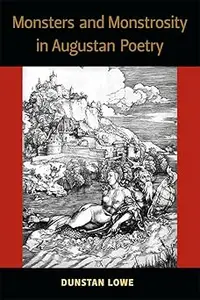Dunstan Lowe, "Monsters and Monstrosity in Augustan Poetry"
English | ISBN: 0472119516 | 2015 | 288 pages | PDF | 8 MB
English | ISBN: 0472119516 | 2015 | 288 pages | PDF | 8 MB
Roman poets of the Augustan period reinvented monsters from Greek myth, such as Harpies, Furies, and the warring Centaurs and Giants. These monsters represented the attractions and dangers of novelty in various contexts, ranging from social values to artistic innovation. Rome’s two great epics of the early principate, Vergil’s Aeneid and Ovid’s Metamorphoses, are both filled with mythical monsters. Like the culture that produced them, these poets were fascinated by unfamiliar forms despite their potential to disturb and disrupt.
Monsters and Monstrosity in Augustan Poetry is the first full-length study of monsters in Augustan poetry, and the first metapoetic reading of monstrosity in classical antiquity. Dunstan Lowe takes a fresh approach to the canonical works of Vergil, Ovid, and their contemporaries, contributing to a very recent turn toward marvels, monsters, and deformity in classical studies.
Monsters provided a fantastical means to explore attitudes toward human nature, especially in its relationship with sex. They also symbolized deformations of poetic form. Such gestures were doomed to replay the defeat of hypermasculine monsters yet, paradoxically, they legitimized poetic innovation. Lowe proposes that monstrosity was acutely topical during the birth of the principate, having featured in aesthetic debates of the Hellenistic age, while also serving as an established, if controversial, means for public figures to amaze the population and display their power.
Read more



